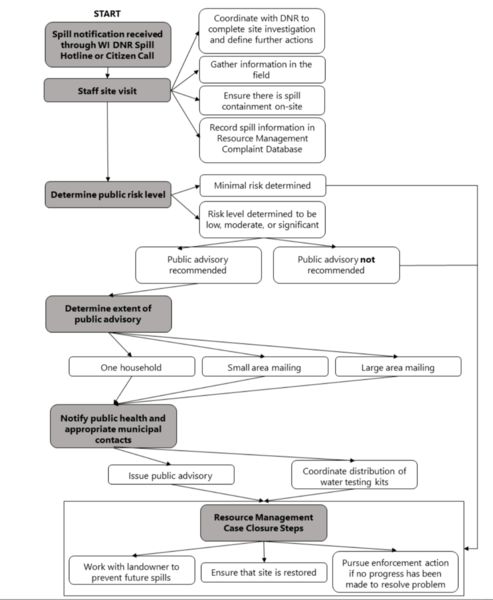Since working on The Sand Sentinel Program with Project Outreach and friends, I've been interested in how reporting suspected permit violations can be supported - made easier and more transparent. The Sand Sentinel Program has the aim of "creating an easier way for people to collect and file reports on suspected permit violations by frac sand mining companies." These materials were built collaboratively by local friends, organizations, and even international contacts who all shared their limited time and resources to bring this project to fruition. While it still has room to grow, especially in the area of surfacing what has been done with these violations once reported, it has helped create a dialogue and resources around community watchdogging that is so important. These are especially important since agencies who are in charge of managing permit violations can't be everywhere (think rural areas!) and are often underfunded. Let's not forget as well, that here in the US, we rely on industry self reporting spills and toxic releases which is a little hard to fathom as a robust system, considering spills and releases beyond permits bear cost to the violating industry.
All this to say that I've found myself looking for places and especially agencies, who help create support materials and systems that make reporting suspected permit violations easier -even normalized, or celebrated! In my mind it's a "Help us, help you keep an eye out for spills!" type of attitude that's required to make sure that agencies with limited eyes and resources are better able to identify problem areas, bad actors, and systems that need improvement.
@pat sent me this great resource from St. Croix County in Wisconsin. They've put some good work into sharing how people can report "brown water events." I particularly appreciated that several key local departments collaborated on this resource- the Community Development Department, Health and Human Services, and Safety & Justice. This collaboration on the part of local agencies can help streamline how someone navigates getting the right information to the right people.
Here are some other things I like about this resource:
- It has a great terms page - helpful in reducing jargon which is a big barrier for people who are just getting started.
- The intro provides great contextualization for "why this is important" - I really like that it's coming as a clear ask from the agency itself - the "normalizing and celebrating" aspect of reporting that should be more ubiquitous.
"St. Croix County recognizes no single department or agency will assess, respond, mitigate, and evaluate a manure spill. St. Croix County believes in partnership between departments and agencies without duplication of services."
- It is clear on how they will handle these calls internally, this is something we've struggled to figure out on the Sand Sentinel Program.
- There's materials in there for what people, who might be responsible for a spill, can do. This is not only helpful for farmers, but also for people who might observe a spill and can report if they're seeing those practices being put in place:
"A. Stop / Contain – stop the discharge and contain it if possible B. Immediately Report – use the WI DNR Hotline 800.943.0003 C. Clean-up / Restore – eliminate the hazard and restore the area"
- They're clear about when reporting should happen and when it's not required, and even help people assess the risk of a spill.
- I really enjoyed the response flow chart! Having one of these on the Sand Sentinel Project would help create more clarity on what's done and why. We've struggled here largely because counties seem to handle frac sand reporting differently, and we often see a lack of capacity for DRN and the county level response.

- They include names and direct phone numbers. We do this in the Sand Sentinel Program as well. These can get out of date, but having that name and number right there has proven helpful.
Things I would have liked to see:
- We have a reporting form for community members, a template people can fill out when they see a suspected permit violation. This response plan has some materials on what you need to provide when you report a spill:
➢ Your name, address and phone number, and the name of the property owner, if different. ➢ The quantity, description and physical state of the discharged substance. ➢ The location and cause of the discharge, including physical address, location description and affected area. ➢ The actions taken to stop the discharge and/or minimize the impact to the environment. ➢ The actual or potential impacts to human health and the environment such as proximity to wells, surface water, etc.
but you have to dig a bit for it. When you include the reporting forms for people to fill out not only does it help create a place for people to gather materials before they report, but it creates a citizen record that can increase accountability and transparency.
- More materials that help people identify these spills would have been helpful. For someone who's not familiar with these spills, what does it look like, smell like, sound like. etc. These descriptors can be really helpful.

0 Comments
Login to comment.